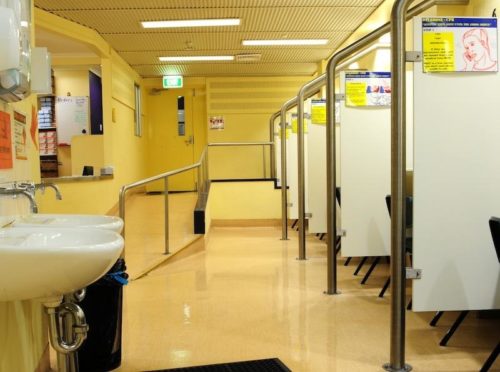
DRUG injecting rooms took another step further to becoming a reality in the ACT.
The final step of allowing illicit drugs to be consumed legally in a safe environment before handing out approval is set to come after proponents undertake community consultation.
The ACT government has released the final report of a study on Thursday (March 25) into the feasibility of establishing a medically-supervised injecting facility.
In accordance with the ACT Drug Strategy Action Plan 2018-2021, the report investigated the feasibility, need, effectiveness and appropriateness of establishing a Canberra purpose drug consumption room.
Minister for Health Rachel Stephen-Smith said the feasibility work around the ACT Medically Supervised Injecting Feasibility Study represented the government’s ongoing commitment to harm minimisation.
“The ACT is leading the nation with drug and alcohol policies that reflect our approach to harm minimisation,” she said.
“We will continue to invest in the evidence-based and practice-informed harm minimisation responses to the use of alcohol, tobacco and illicit drugs.
“The findings from the report will help inform further community discussion, as we continue to develop policies and initiatives that reduce the harms associated with drug use.”
The ACT has already pushed for pill testing and decriminalising cannabis legalisation.
The drugs under question to be cleared for use inside injecting rooms would include heroin and methamphetamines.
Conducted by the Burnet Institute for Medical Research and the Canberra Alliance for Harm Minimisation and Advocacy, the final report has indicated that “stakeholders and consumers overwhelmingly support the establishment of a drug consumption room in the ACT, which matches broader community support”.
“The report found a high level of satisfaction with alcohol and drug services in the ACT and acknowledges other measures the government has taken to reduce drug overdose deaths, such as Australia’s first take-home naloxone program,” Ms Stephen-Smith.
“This gives us a strong base from which to consider further harm minimisation measures.”
Prospective consumers also cited health, safety and legal reasons for wanting to utilise a drug consumption room.
The study had also concluded patterns of drugs trends and related harm incidents indicate “that overdose and public drug use are significant public health and amenity issues”.
Canberra’s relatively small population, compared to Melbourne and Sydney where injecting rooms are already in use, will aid the drug consumption room model and ideally establish a small facility in the national capital.
Sources that analysed the study indicate a “clear need for the expansion of comprehensive harm reduction services to meet the needs of a vulnerable population of people who inject drugs”.
The government will now consider the findings of the report and discuss as part of broader sector planning with the local alcohol and drug sector.
“Additional scoping work will be required before a decision is made on whether (or not) to proceed with a drug consumption room in the ACT, including community consultation, an assessment of the existing legislative framework and further development of appropriate models,” Ms Stephen-Smith said.
Who can be trusted?
In a world of spin and confusion, there’s never been a more important time to support independent journalism in Canberra.
If you trust our work online and want to enforce the power of independent voices, I invite you to make a small contribution.
Every dollar of support is invested back into our journalism to help keep citynews.com.au strong and free.
Thank you,
Ian Meikle, editor




Leave a Reply